Marine
Prey Species across Smith Bank
August 30, 2019 by Marine Directorate Communications No Comments | Category Collaborations, Marine Directorate general, Marine Directorate Science, Marine Directorate Surveys, Marine Planning, Marine Renewables, Research Vessel Surveys
MRV Alba na Mara
Survey: 1419A Programme
Duration: 27-30 August 2019
Locations:
- Beatrice Offshore Windfarm Limited (BOWL);
- Moray East Offshore Windfarm (MEOW);
- Moray West Offshore Windfarm (MWOW).
Objectives
Primary Objectives:
- Study the distribution of prey species (fish schools and zooplankton patches) across Smith Bank in relation to data available from BOWL post-construction digital aerial surveys and University of Aberdeen (UoA) Passive Acoustic Monitoring (PAM) surveys of top predators.
- Compare the distribution of schooling sandeels in summer with data on their presence in the sediment from the BOWL/MEOW winter sandeel monitoring.
- Recover two Acoustic Doppler Current Profiler (ADCP) devices deployed in the BOWL area.
Secondary Objective:
Collect hydrographic data to further validate the Scottish Shelf Model (SSM) and incorporate its outputs into assessment of drivers of predator distribution.
Procedure
Alba na Mara will conduct an acoustic survey at an average speed of 8 knots along key transects between wind farm turbine rows (see Figure 2), to capture data on mid-water feeding sandeels using all available frequencies from the EK60 echo sounder. Concurrent seabird and cetacean visual surveys will collect predator data during the transects.
Pelagic sampling for sandeels using the PT154 will normally be conducted early on in the day. Sandeel dredge tows or Day grabs will be deployed as a back-up if required. Fishing haul positions will be chosen along the survey transects but not necessarily in the same orientation.
Plankton sampling will be conducted using the dual “bongo” net, fitted with mesh sizes of 200 and 68 µm. Collected samples will be preserved in each of: 70% alcohol, 4% formaldehyde and frozen in vital stain neutral red.
Sampling positions have been selected to cover the southern part of the BOWL area based on the survey transect lines. Three of the selected positions will be prioritised and the two remaining ones will be done if time allows. Figure 3 shows all plankton sampling positions.
The two ADCP devices will be retrieved during the survey when possible, Figure 4 shows the locations of these devices.
This survey continues the work undertaken during Alba na Mara survey 0919A.
Survey Activities During Turbine Piling Activities
The Alba na Mara will survey around any turbine piling activities should these start at the MEOW site. Alba na Mara will collect biological samples at a predetermined safe distance from piling activities. Daily contact with the MEOW operation team will ensure that the Alba can sample soon after piling events begin.
Conductivity Temperature Depth (CTD) and water sampling (seabed and mid-water) will be simultaneously undertaken at each plankton station, with data collected for the Scottish Shelf Model. See Figure 3 for locations.
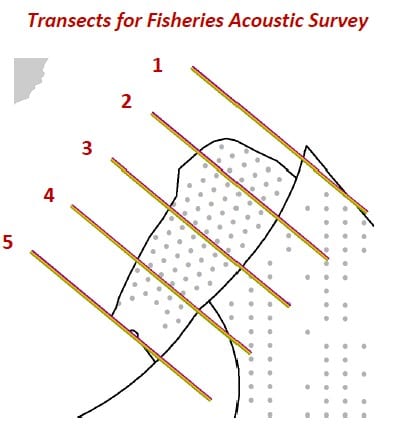
Figure 2: Proposed transects for fisheries acoustic surveys (grey dots represent wind turbine locations, both built and planned).
Figure 3: Hydrographic and plankton sampling positions (grey dots represent wind turbine locations, both built and planned, cyan dots represent sampling locations from 0919A).
Further Information:
Tags: Alba na Mara, MEOW, Moray East Offshore Windfarm, Moray West Offshore Windfarm, pelagic, Prey Species, research, sampling, sandeels, science, seabird, Survey, turbine, University of Aberdeen, windfarm

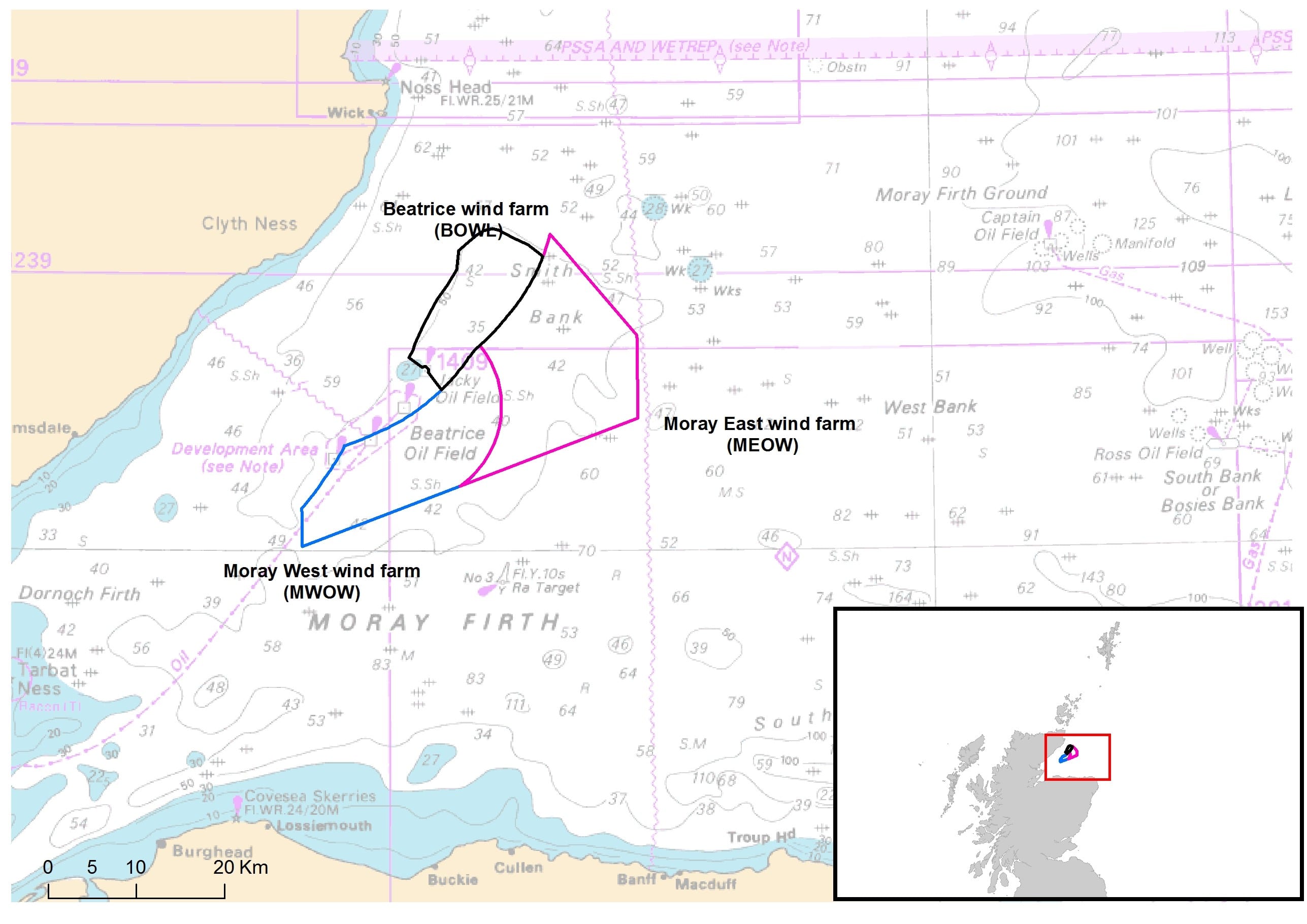
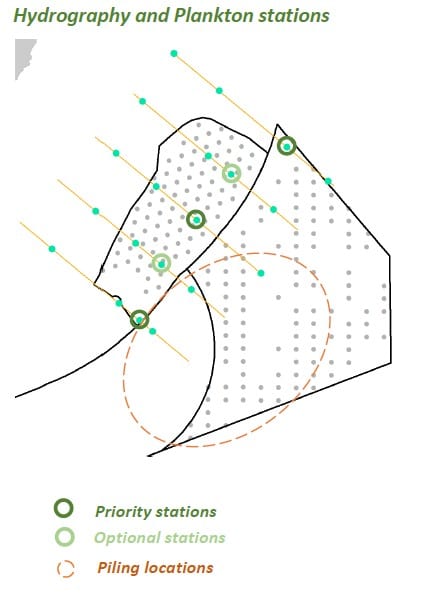
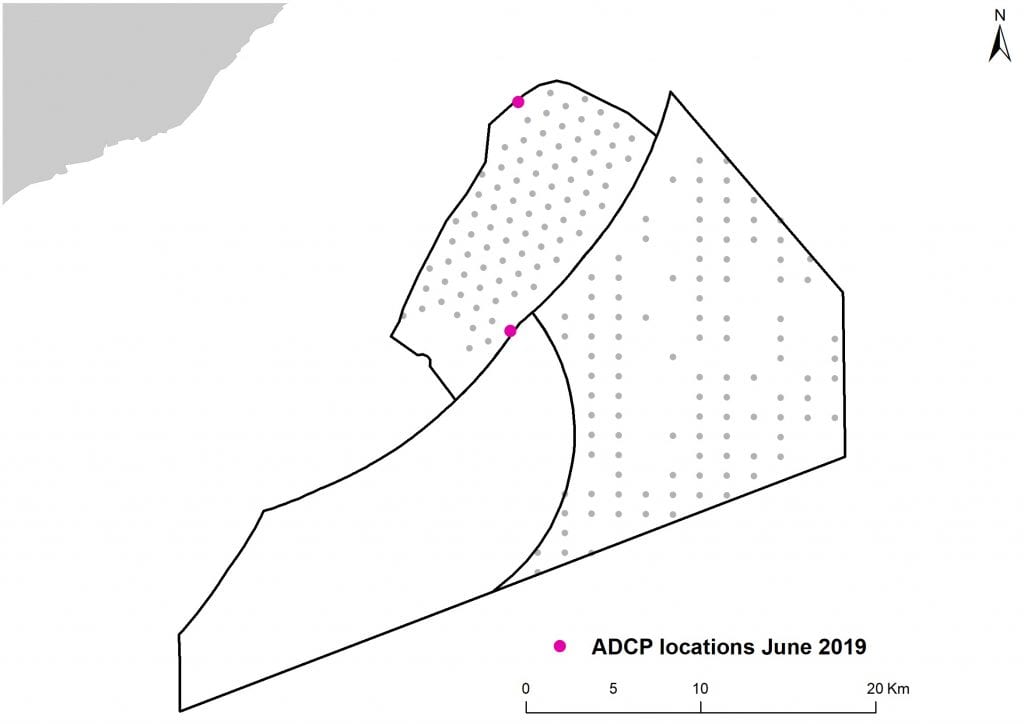
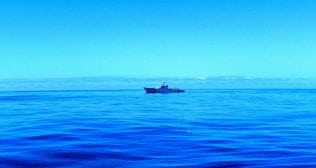
Leave a comment